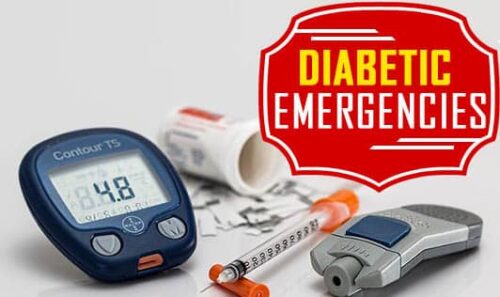Understanding Diabetes: Recognizing Low and High Blood Sugar Emergencies
Introduction
Diabetes is a chronic medical condition that affects millions of people worldwide. Managing diabetes involves keeping blood sugar levels in a healthy range, but sometimes, blood sugar can become too low (hypoglycemia) or too high (hyperglycemia), leading to potentially life-threatening emergencies. In this blog post, we will explore the symptoms of low and high blood sugar and discuss what to do in case of these emergencies.
Table of Contents:
- Recognizing Low Blood Sugar (Hypoglycemia)
- Symptoms of Hypoglycemia
- Causes of Low Blood Sugar
- What to Do in a Hypoglycemic Emergency
- Spotting High Blood Sugar (Hyperglycemia)
- Symptoms of Hyperglycemia
- Causes of High Blood Sugar
- Managing Hyperglycemia
- Preventing Blood Sugar Emergencies
- Lifestyle Choices
- Medication Management
- Monitoring Blood Sugar Levels
- Conclusion
1. Recognizing Low Blood Sugar (Hypoglycemia)
Symptoms of Hypoglycemia
Low blood sugar, or hypoglycemia, occurs when blood glucose levels drop below the normal range. Recognizing the symptoms of hypoglycemia is crucial for quick intervention:
- Sweating
- Trembling or shivering
- Rapid heartbeat
- Dizziness or lightheadedness
- Confusion
- Irritability
- Hunger
- Headache
- Blurred vision
Causes of Low Blood Sugar
Hypoglycemia can result from various factors, including:
- Taking too much insulin or other diabetes medications
- Delayed or missed meals
- Excessive physical activity without adequate carbohydrate intake
- Drinking alcohol on an empty stomach
What to Do in a Hypoglycemic Emergency
If you or someone you know is experiencing hypoglycemia, act swiftly:
- Consume fast-acting carbohydrates, such as glucose tablets, fruit juice, or a regular soda.
- Follow up with a complex carbohydrate and protein source, like whole-grain crackers or cheese, to stabilize blood sugar.
- Recheck blood sugar after 15 minutes and repeat the process if necessary.
- Seek medical attention if symptoms don’t improve or worsen.
2. Spotting High Blood Sugar (Hyperglycemia)
Symptoms of Hyperglycemia
High blood sugar, or hyperglycemia, occurs when blood glucose levels rise above the target range. Recognizing the symptoms of hyperglycemia is essential:
- Excessive thirst and urination
- Fatigue
- Blurry vision
- Dry mouth
- Frequent infections
- Slow wound healing
- Nausea or vomiting
Causes of High Blood Sugar
Hyperglycemia can result from various factors, including:
- Overeating or consuming high-carbohydrate foods
- Insufficient insulin or diabetes medication
- Illness or infection
- Stress
Managing Hyperglycemia
If you experience hyperglycemia, take the following steps:
- Check your blood sugar levels and follow your healthcare provider’s guidance on insulin or medication adjustments.
- Drink plenty of water to help flush excess glucose from your system.
- Monitor your ketone levels, especially if you have type 1 diabetes, as high ketone levels can be dangerous.
- Contact your healthcare provider if blood sugar levels remain consistently high or if you have ketones in your urine.
3. Preventing Blood Sugar Emergencies
The best approach is to prevent blood sugar emergencies from occurring in the first place. Here are some strategies:
Lifestyle Choices
- Maintain a balanced diet with controlled carbohydrate intake.
- Incorporate regular exercise into your routine, but be mindful of its effects on blood sugar.
- Manage stress through relaxation techniques, mindfulness, or hobbies you enjoy.
Medication Management
- Take your diabetes medications as prescribed and adhere to your insulin regimen.
- Regularly consult with your healthcare provider to adjust medication dosages if necessary.
Monitoring Blood Sugar Levels
- Use a blood glucose monitor to check your levels regularly.
- Record your readings to identify patterns and potential triggers for low or high blood sugar.
4. Conclusion
Understanding the symptoms of low and high blood sugar and knowing how to respond to these emergencies is critical for those living with diabetes. By recognizing the signs and acting promptly, you can minimize the risk of complications and ensure better diabetes management. Always work closely with your healthcare provider to develop a personalized diabetes management plan that suits your unique needs. Remember, knowledge and proactive management are your best tools for controlling your diabetes.

